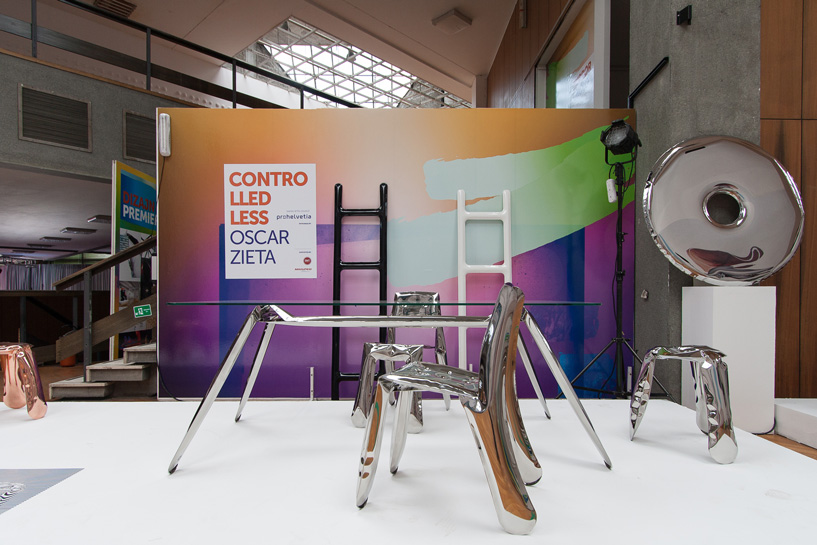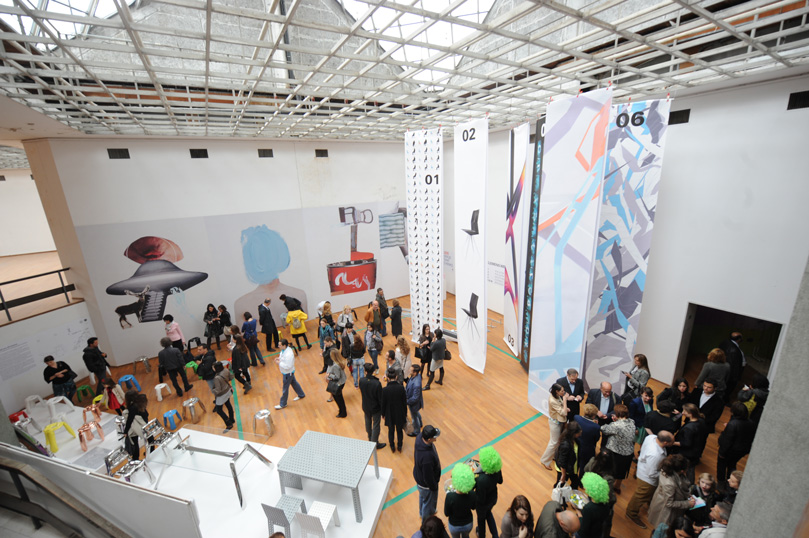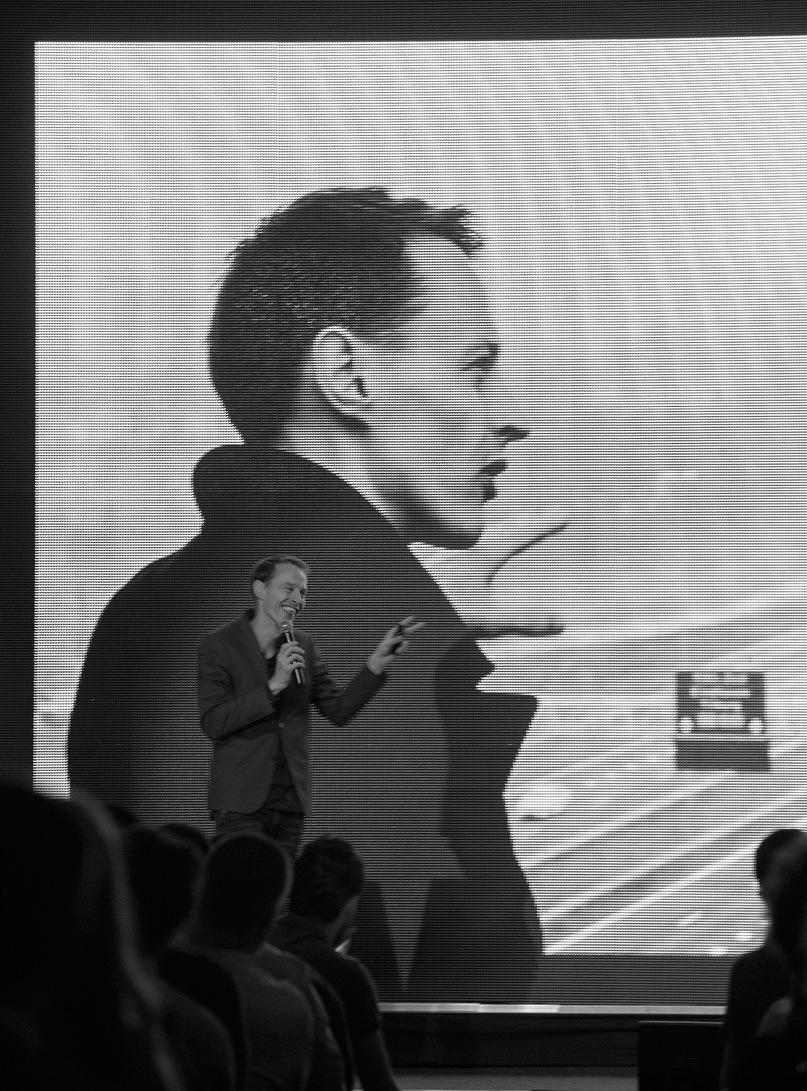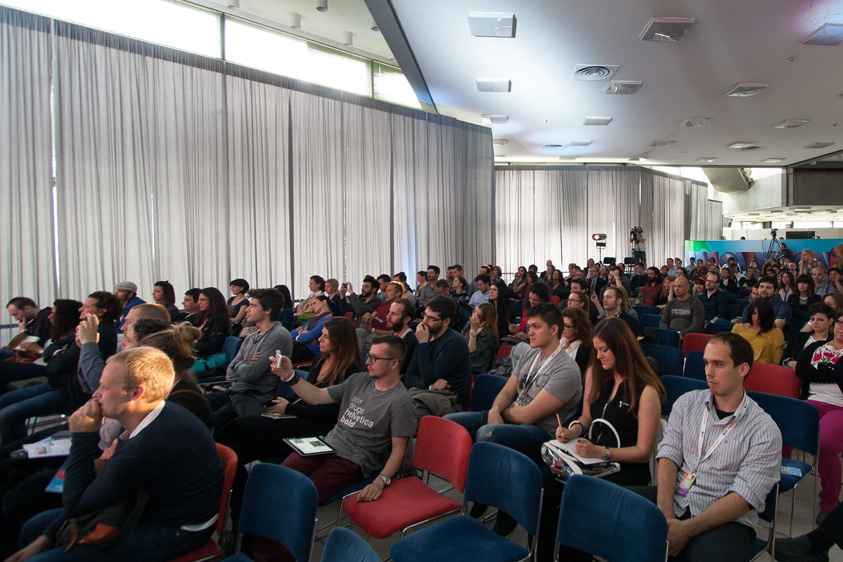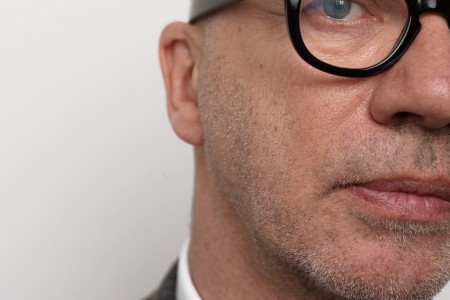Belgrade Design Week 2013
After years of struggle and strife, the citizens of Serbia’s war-torn capital are recasting their home into a burgeoning hub for design, culture and creativity. Next edition of the Belgrade Design Week will happen from 25 May until 1st June 2014 at the Museum of Yugoslav History.
HIDDEN IN A SWATH OF DENSELY forested parkland where the Sava River meets the Danube, one of Europe’s first national modern art museums sits in disrepair. The glass-roofed structure, built in 1965, once displayed works by Miró, Ernst, Rauschenberg, Hockney and others, but for the last six years it has been empty, as the government’s financing to renovate the space has dried up.
Today Jovan Jelovac, the impresario behind Belgrade’s weeklong design summit, held each June, has commandeered the abandoned, multilevel space as the headquarters for his roster of presentations, exhibitions and parties. This summer afternoon, sauntering past an assembly of fashionable attendees, Jelovac rattles off a list of his “formative gods,” citing everyone from Eugène Ionesco to Federico Fellini, Buckminster Fuller to Joseph Beuys. But his real muse, it seems, is Belgrade itself. An indefatigable booster of his home city, Jelovac is equal parts global publicist, cultural advocate and triage nurse. Assisted by an all-female team he describes as “supermodels and capoeira fighters turned international design aficionados,” he travels the world hunting down people like Ross Lovegrove, Simon de Pury, Jacques Herzog, Pierre de Meuron and Rem Koolhaas to speak at his annual symposium. After Karim Rashid attended in 2006, he designed a cafe, gave the city’s Mozzart Casino a psychedelic redo, opened a signature boutique and even married a local woman.
WHILE POST-COLLECTIVIST capitals often redefine themselves in a blast of showy glitz (see: ’90s Moscow), here the end of Socialism of starting with the death of Tito in 1980, followed by the chaotic breakup of Yugoslavia in 1992 and the ensuing Balkan conflicts, which displaced hundreds of thousands of people in the region brought culture and design to a standstill. However, when residents finally began to recover from that grim nightmare around 2000, they found themselves smack in the middle of the Information Age, where global ideas — aesthetic and otherwise — were accessible for anyone with an Internet connection. In fact, reinvention is seen as a birthright in this culture, which has seen so much struggle and strife. Today there is a palpable energy in the air as Belgraders go about purposefully transforming their home into a stylish and design-savvy city.
In the last few years, outside investment has poured in, which has led to an impressive array of international projects that will soon recast the Belgrade skyline. No one is more excited than Jelovac. “We’re redefining for the 21st century,” he says, citing as evidence the new Ada Bridge, a dazzling feat of architecture opened in 2012, as well as the pending addition of Zaha Hadid’s extravagantly warped commercial-residential complex in the historic Dorcol area, Sou Fujimoto’s spiral building in Savamala and Wolfgang Tschapeller’s breathtaking science center in New Belgrade.
Meanwhile, the government of the United Arab Emirates, which has already agreed to invest hundreds of millions of dollars in agriculture and banks in the region, is rumored to be ogling the ruined Ministry of Defense as a potential hotel project. On the local level, there is the emerging Belgrade Design District, an initiative of young designers who have reimagined an abandoned shopping mall as a platform for hip local brands, and Boris Ivanovic, an entrepreneurturned- design enthusiast, who has funneled the fortune he has made in broadband into his passion project, the Art of Kinetik, a line of luxury speedboats. “There is talent here, like everywhere else.It’s just roughed up and underdeveloped,” he explains. “We’re providing an environment to cultivate it into something polished and sophisticated.” The city’s taste for elegance can certainly be seen in a slew of sleek new boutique hotels that have cropped up. The most impressive addition is Square Nine, a $40 million project opened in 2011 by the brothers Nenad and Nebojsa Kostic and designed by the Säo Paulo-based architect Isay Weinfeld, who conceived a handsome modern facade and decked out the interiors in rich Brazilian woods. The brothers filled the rooms with midcentury Danish, Scandinavian and American pieces and stocked the dining room with chefs and bartenders from five-star hotels like Claridgeís in London. In a capital razed so many times over the years, design tends to look forward, not back, which makes the refined vintage swagger the Kostics brought to the project all the more striking.
“People here abolish history. They want the new,” Nebojsa says. Which has led to the traditional familystyle restaurants giving way to trendier places serving more international fare. At Belgrade’s most fashionable restaurant, Dijagonala 2.0, the chef, who recently did a stint at Rene Redzepiís acclaimed Noma in Copenhagen, serves up plates of smoked calfís heart carpaccio and prawn-and-lobster sausage. The rock starturned-designer-restaurateur Aleksandar Rodic has opened a pair of terrace-front restaurants inside the Beton Hala, a vast riverside warehouse: Comunale, which serves up modern Italian fare, and Iguana, a jazz bar and restaurant with a Thai-accented menu. After hours, the stylish set head to Savamala, the venerable neighborhood where a group of Bosnian Serbs initially plotted the 1914 assassination of Archduke Franz Ferdinand, which has been refashioned as the cityís latest night-life district. “We’ve been through so much,” Nenad Kostic says. “Living in a war zone gives you a nice appreciation for the ephemeral nature of things. People here live in the moment. They enjoy themselves.” But they’re also serious about turning Belgrade into a stylish, thriving city. “This new generation is super-open-minded about innovation and change,” Jelovac evangelizes, sitting in the garden at the Macura Museum, an austere black cubelike building on the outskirts of town. The first art museum built in Serbia in decades, it houses one of the Balkans’ largest private collections of Eastern European avant-garde art . “We’re experiencing a rush of design spirit, the talent reawakening from a long slumber.”
Extract of The New York Times article.
